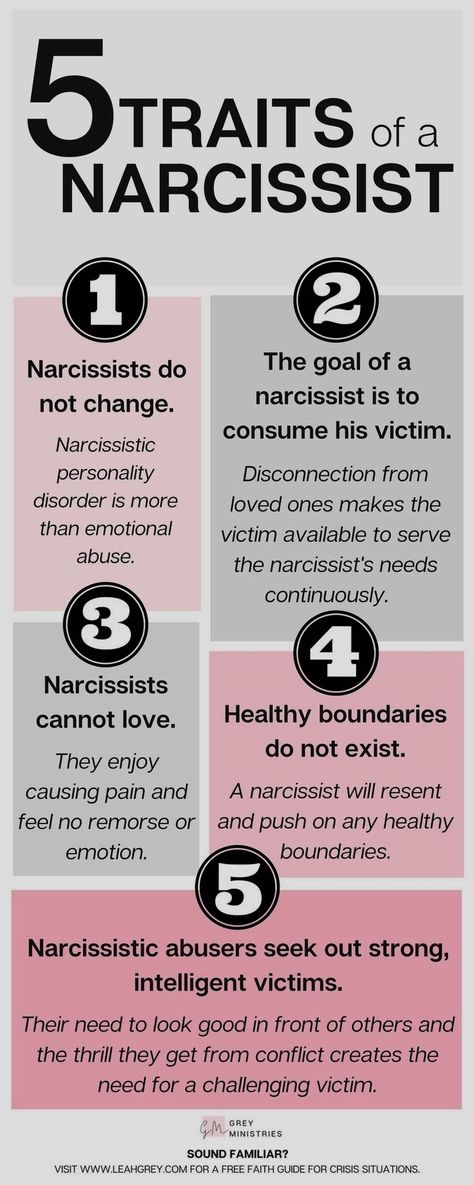What is gray rock
What is the Grey Rock Method?
“Using the grey rock method.”
This phrase may sound entertaining or even funny, but the meaning behind grey rocking is anything but.
For therapists who work with clients struggling in relationships with abusers or narcissists, this is one concept that has likely been the topic of many conversations and counseling sessions. So what is grey rocking, when should you use it, and when should you avoid it?
What is the grey rock method?
The phrase ‘grey rock’ is a metaphor for a way to deflect or defuse further abuse from a partner, a family member, or even a coworker. Simply put, it’s when a person who is enduring abuse purposely acts as boring as possible during encounters with their abuser.
‘Grey rock’ behavior is generally carried out through actions such as providing little input and avoiding reacting to, engaging with, or even acknowledging the other party’s attempt to manipulate or create a chaotic or toxic situation.
What results from this is behavior that is as dull and uninteresting as a plain grey rock – hence, the phrase ‘going grey rock.’
Grey rock can be a technique for difficult but necessary relationships
The logic underlying the grey rock method is that manipulative and narcissistic individuals feed on response, emotion, and drama. Perhaps you were told growing up that schoolyard bullies were trying to provoke your response, and that if you ignored them, they would feel defeated and eventually retreat.
The same line of reasoning applies to the grey rock technique. When a person goes grey rock, he or she will refrain from showing any emotional response, thereby denying the abusive person a clear path to escalate the situation.
Grey rocking often involves behaviors like:
- Shrugging and nodding
- Using noncommittal phrases and responses like “eh,” “mhm,” or “uh-huh”
- Avoiding eye contact
- Responding briefly, and without elaboration, to direct questions
- Ending or leaving interactions as quickly as is safely possible
When might someone use the grey rock technique?
The grey rock technique is recommended for anyone who is in a long-term, committed relationship with a manipulative person. One misconception is that the relationship between the victim and the abuser must be romantic or amorous in nature, but this is not true. Situations where the grey rock technique may prove useful extend far beyond marriages and romantic relationships.
One misconception is that the relationship between the victim and the abuser must be romantic or amorous in nature, but this is not true. Situations where the grey rock technique may prove useful extend far beyond marriages and romantic relationships.
There are many precarious interpersonal situations where grey rocking can come in handy:
- Relationships with difficult or abusive coworkers who regularly attempt to start workplace fights or drama
- Relationships that involve unavoidable interactions with manipulative siblings, stepparents, in-laws, or other family members or relatives (for example, family holiday gatherings)
- Relationships with roommates or host family members who exert controlling or manipulative behavior
Grey rocking when children are involved
The flexibility of the grey rock technique makes it useful in a variety of relationship contexts, including ones that involve children. However, unfortunately, for many, the presence and inclusion of children can either discourage or complicate the use of this technique because of fear that it may negatively impact the child(ren). Still there are ways to effectively—and almost passively—go grey rock so as to avoid it affecting the child.
Still there are ways to effectively—and almost passively—go grey rock so as to avoid it affecting the child.
Let’s consider the use of the grey rock technique in a co-parenting situation
One spouse might share co-parenting duties with a narcissistic ex-husband or ex-wife. In this case, the non-toxic parent will likely have to interact with the manipulative parent on a regular basis for things such as managing visitation rights or arranging celebratory gatherings for different milestones (e.g., birthdays, graduations).
If the manipulative partner attempts to start a fight or get a rise out of the other parent, it is advisable that the grey rock technique is used in the form of bland agreements, nods, and emotionless silence.
If you are on the receiving end of the manipulative person's advances, you can also limit the times you are in a setting together. You may also keep communication to one-word answers, eradicating the likelihood of feeding the manipulative person information about your life. If they have nothing to comment about or refer to, they lack the power to use information against you.
If they have nothing to comment about or refer to, they lack the power to use information against you.
Grey rock technique with adult kids 18+
It may be easier to implement the grey rock technique with older kids since they can understand and see things for themselves. A parent who has been through the torment of an abusive person can communicate with their child about the situation openly if they choose to. You may conceal a few things that seem to be personal to you, but just let them understand the kind of person their other parent is. Be careful with your language to not sound bitter or berating. Instead, use factual data to support your claims.
It may come a time where a child has to visit the home of the manipulative parent—whether it be to handle family affairs, to visit for the holidays, or to participate in events for another type of arranged visit. During that time together, it is very possible that the manipulative parents will try to goad or provoke their children, carrying out their anger with behavior that may be particularly pointed, especially if they feel that they have lost control over their children’s lives.
By giving your child a heads-up, or rather some background information, they will increasingly become more emotionally equipped to manage their abusive parent. If they so wish, they too may use the grey rock method.
How do narcissists react to grey rock?
People who have toxic or narcissistic tendencies react abruptly, stubbornly, and often with aggression if their tactics are not working. As you gain strength in not responding to their attempts to disturb you, they may feel triggered, exposed, or defeated, and may throw child-like tantrums as a response.
Here are a couple of reactions you may notice:
They flee the scene
If you go grey rock, the first thing you may notice is that they run away. This is the best possible outcome of the situation.
They may feel that they have been exposed and that you have brought to light their hidden bad qualities. Overt narcissists, who only care about being regarded as a decent person incapable of causing harm, are the primary types of narcissists who may behave in this manner.
Their flight response attempts to preserve their dignity by distancing themselves from the situation. In most cases, their fleeing is only the beginning. Practice caution as they may begin speaking ill of you to cover up or overcompensate for the wrongs they have done. If you tell anyone about the mental or physical abuse you suffered, they may not believe you. They may have already been convinced or persuaded by the other party.
It is also possible for the covert narcissist to flee the scene and play the role of the victim in the story, switching the story in their favor and actually painting a picture of you as the person who is in the wrong.
Verbal and physical abuse
The second possible response a narcissist could have is to resort to physical force to coerce you into talking. Because you are not responding to their questions, they may become belligerent or intend to inflict suffering and terror on you to demean you further.
They may cause bodily or mental suffering to frighten you into staying silent. As an additional method of intimidation, they could threaten other individuals like your kids, whom you care about, or deny certain things like money or freedom.
As an additional method of intimidation, they could threaten other individuals like your kids, whom you care about, or deny certain things like money or freedom.
The most common narcissist to do this is the malignant narcissist who relishes in other people's pain. They are sadistic and oppressive.
They change the narrative
One other kind of narcissist that we will highlight that may resort to verbal manipulation in changing the story is the conversational narcissist. Conversational narcissism entails the manipulation of a person by changing the narrative by casting doubt and ultimately denying the conversation ever happened. They ultimately gaslight you and try to flip the script.
Even when you grey rock them, they may still carry on with the conversation, throwing in comments like, “it is because of you that I did what I did.” Like the covert narcissist, they shift the blame to you and act like the victim in the situation to put themselves in a better light.
What are the drawbacks of the grey rock method?
It is important to understand that the grey rock technique is usually not a sustainable, long-term solution. Instead, the grey rock method is a tool that individuals can use on an as-needed basis, especially in situations where interacting with the manipulative person is simply unavoidable.
Instead, the grey rock method is a tool that individuals can use on an as-needed basis, especially in situations where interacting with the manipulative person is simply unavoidable.
A much better solution for victims of abuse, stalking, and relationship violence is to get support in ending relationships completely and achieving “no contact,” whether through a new living arrangement, a restraining order, or professional help and involvement.
Here are some drawbacks of the grey rock technique:
You may trigger further aggravation
As it relates to drawbacks, the first, and perhaps most important thing to remember is that individuals who use the grey rock technique risk provoking abuse even as they are trying to protect themselves. Narcissists and other manipulative individuals who thrive on conflict may become frustrated when they find others “going grey rock” on them.
Individuals who use the grey rock technique often report having to walk a difficult line when using it -- their very lack of response may become the object of insults and attention, which can then lead to escalated verbal and/or physical abuse.
The psychological torment
A second potential drawback is keeping silent about the reasoning behind one’s actions, especially in situations where explaining the decision to go grey rock appears to be the best solution for kindling the abuser’s anger. In general, it is not recommended that individuals tell their abusers they are “going grey rock.” Doing so may inadvertently provoke pointed abuse.
There’s also a psychological risk inherent in grey rocking. By its very nature, the grey rock technique causes an individual to disconnect from, or push down, their natural emotional responses and feelings. Over time, an individual who is “going grey rock” can struggle with disconnection from their emotions and even their identities.
In already thorny relationships, going grey rock may make it still more difficult to process feelings, responses, and events. Indeed, individuals who use the grey rock technique may focus on a task at hand, stare at a point in the distance, or mentally envision themselves in an entirely different place or time. These strategies can make difficult, painful moments easier. But they are also forms of dissociation that, if sustained, can lead to negative mental health effects. Therapists who discuss the grey rock technique caution to be aware of these consequences.
These strategies can make difficult, painful moments easier. But they are also forms of dissociation that, if sustained, can lead to negative mental health effects. Therapists who discuss the grey rock technique caution to be aware of these consequences.
When to avoid the grey rock method
There are several scenarios that you need to avoid using the grey rock method. Those scenarios are:
- When there is already mental, physical, sexual, and verbal abuse: When you grey rock an abuser who is already doing these things to you, you aggravate them even further, and they may exert more force. If you or a loved one are in immediate danger, immediately contact the national domestic violence hotline, 911, or any of these crisis resources to get immediate help.
- When other people are in danger: If the person you are trying to avoid gets angry or abuses the kids, your pets, or anyone trying to help, it is likely too late for the grey rock technique.
 Leave the situation as soon as possible and secure the support that you need (like a therapist or a support group) to support yourself in following through with this healthy, though challenging, decision.
Leave the situation as soon as possible and secure the support that you need (like a therapist or a support group) to support yourself in following through with this healthy, though challenging, decision.
The grey rock technique for therapists
Therapists and counselors have a range of strategies available to help them give the best possible guidance to their clients. And clients themselves will have already employed an array of coping mechanisms, private techniques, and day-to-day strategies for getting by, especially when they are in long-term, unavoidable relationships with manipulative individuals.
The grey rock technique is a method that may be brought up on either side. While it may be effective in short-term, necessary situations, the risks of using the grey rock technique often--or as a “default mode”--add upon the significant emotional taxation of interacting with an abusive or narcissistic individual. Anyone who considers the grey rock technique should be aware of the benefits and the costs of the strategy for coping with difficult situations and relationships over the long term.
Therapists may find that their clients feel stuck in abusive or unhealthy households or relationships, and are just looking for a way to get by until they can safely create a new arrangement for themselves (and possibly their children). In these cases, grey rocking is especially useful for helping make day-to-day life less stressful, painful, or challenging.
The fact of the matter is that many individuals who grew up in challenging households households have used the grey rock method without knowing there was a name for it. Behaving in a flat, emotionless manner can be a natural defense mechanism for those living with angry or manipulative family members. But what is equally important is that the person knows how to effectively use the grey rock technique. Therapists should talk more with their clients about the benefits and versatility of grey rocking as a means of handling toxic relationships.
What if the grey rock method does not work?
Suppose you have answered in nods, given scanty answers, and minimized contact, and the abuse is still worsening. Perhaps, the situation calls for deeper support than you originally realized. The grey rock method is effective in the short term, but you need long-term solutions to heal fully.
Perhaps, the situation calls for deeper support than you originally realized. The grey rock method is effective in the short term, but you need long-term solutions to heal fully.
The best possible option is to receive personalized, highly tailored support and guidance. Therapy is a good place to start to ensure that you have a safe space to process everything that you are going through and receive tools, perspective, and advice that is specifically catered to you and your needs.
Those who are trying to make you feel less-than are striping you of your power and agency. In therapy, you can grieve all of the harm and all that you’ve lost, but you also take your power back. With the support of a caring and trained professional, you will uncover what the best next steps are for you, and you will have the support by your side to make the (sometimes difficult) decisions that you need to.
No one needs to handle all of this on their own. You deserve support, especially if you are dealing with an abusive relationship. Secure the support that you need today.
Secure the support that you need today.
What it is and how to use it effectively
Grey rock method: What it is and how to use it effectively- Health Conditions
- Health Conditions
- Alzheimer's & Dementia
- Anxiety
- Arthritis
- Asthma & Allergies
- Breast Cancer
- Cancer
- Cardiovascular Health
- COVID-19
- Dermatology & Skincare
- Diabetes
- Environment & Sustainability
- Exercise & Fitness
- Eye Health
- Headache & Migraine
- Health Equity
- HIV & AIDS
- Human Biology
- Inflammatory Bowel Disease
- Leukemia
- LGBTQIA+
- Men's Health
- Mental Health
- Multiple Sclerosis (MS)
- Nutrition
- Parkinson's Disease
- Psoriasis
- Sexual Health
- Women's Health
- Health Conditions
- Health Products
- Health Products
- Nutrition & Fitness
- Vitamins & Supplements
- CBD
- Sleep
- Mental Health
- At-Home Testing
- Men’s Health
- Women’s Health
- Health Products
- Discover
- News
- Latest News
- Original Series
- Medical Myths
- Honest Nutrition
- Through My Eyes
- New Normal Health
- Podcasts
- Can diet help improve depression symptoms?
- Research highlights of 2022
- How Viagra became a new 'tool' for young men
- What makes breast cancer come back?
- How to understand chronic pain
- What is behind vaccine hesitancy?
- News
- Tools
- General Health
- Drugs A-Z
- Health Hubs
- Health Tools
- BMI Calculators and Charts
- Blood Pressure Chart: Ranges and Guide
- Breast Cancer: Self-Examination Guide
- Sleep Calculator
- Quizzes
- RA Myths vs Facts
- Type 2 Diabetes: Managing Blood Sugar
- Ankylosing Spondylitis Pain: Fact or Fiction
- General Health
- Connect
- About Medical News Today
- Who We Are
- Our Editorial Process
- Content Integrity
- Conscious Language
- Newsletters
- Sign Up
- Follow Us
- About Medical News Today
Medically reviewed by Marney A. White, PhD, MS, Psychology — By Zawn Villines — Updated on Jan 10, 2023
White, PhD, MS, Psychology — By Zawn Villines — Updated on Jan 10, 2023
Gray rocking, or the grey rock method, is a tactic some people use when dealing with abusive or manipulative behavior. It involves becoming as uninteresting and unengaged as possible so that the other person loses interest.
Some people anecdotally report that it reduces conflict and abuse.
The idea behind the technique is that abusive people, especially those with narcissistic tendencies, enjoy getting a reaction from their victims. Refusing to give them this reaction makes interactions less rewarding. There is no research to confirm that it works.
This article examines the grey rock method in more detail, including what it is, how people use it, and its risks. It also provides other strategies for dealing with abuse, along with support resources.
To “grey rock” a person involves making all interactions with them as uninteresting and unrewarding as possible. In general, this means giving short, straightforward answers to questions and hiding emotional reactions to the things a person says or does.
Some people use the grey rock method with those they suspect of having narcissistic personality disorder (NPD). People with NPD may use others as a source of attention, manipulating them to get a specific reaction that bolsters their ego.
The idea behind grey rocking is that it will, in theory, cut off a person’s “narcissistic supply” and cause them to lose interest in their target.
The grey rock method vs. social withdrawal
People experiencing abuse sometimes withdraw from others in their lives. This is distinct from grey rocking, as it is not an intentional method of self-preservation. Instead, it is the result of the abuse harming a person’s mental health.
People may withdraw from friends and family due to feelings of shame, isolation, or a sense that nobody will believe them. They may also withdraw if they feel loyal to the perpetrator and do not want to hear negative criticism of them.
Grey rocking only applies to the relationship with the abuser. If a person becomes withdrawn more generally, they may be in distress.
If a person becomes withdrawn more generally, they may be in distress.
People use the grey rock method to reduce the harm of emotional abuse. Emotional abuse includes a range of tactics that either deliberately harm a person or exploit them to the benefit of the perpetrator. Some examples include:
- intentionally humiliating someone in front of others
- calling them names
- deliberately making a person feel worthless or unsafe
- attempting to control another person’s behavior
- isolating them from friends or family
- gaslighting them, which involves making a person question their experience of reality or feel “crazy”
No published research has assessed how well the grey rock method works, whether it reduces abuse, or how it affects the behavior of abusive people. As a result, it is hard to know whether it reliably works or is safe.
Anecdotal evidence suggests that people who implement the technique may be better able to detach from abusive individuals. Grey rocking may also give abusive individuals fewer opportunities to exploit others.
Grey rocking may also give abusive individuals fewer opportunities to exploit others.
In theory, grey rocking a person with NPD is meant to cause them to lose interest in the target of their behavior. However, grey rocking is a relatively new concept. As a result, there is no research assessing whether the grey rock method produces this result.
Anecdotally, people who try the grey rock method report the following reactions from those with suspected or confirmed NPD:
- confusion
- frustration
- boredom
- anger
In some cases, people report that an abusive person becomes affectionate and warm in an attempt to make the victim reconsider their approach. Some refer to this as “love bombing.”
However, the abusive person might also try to draw their target back into their life by creating a crisis or enlisting the support of others. Some call this technique “hoovering.”
There are also some potential risks of the grey rock method.
There is no research on the risks of the grey rock method. However, so long as a person remains in contact with an emotionally abusive person, there is always a risk that they will experience abuse.
However, so long as a person remains in contact with an emotionally abusive person, there is always a risk that they will experience abuse.
Some other potential risks include:
Escalation
If the abusive person does not get what they want from an interaction, they may increase their efforts to get it instead of backing down. This is known as escalation.
The abusive person may intensify their old methods of getting a reaction from someone, or they may try new tactics. This could involve increasingly manipulative, invasive, or aggressive behavior.
Escalation is common in abusive relationships and can progress to physical violence.
Fatigue and frustration
Grey rocking another person requires immense self-control, especially if that person is very abusive or interacts with their victim regularly. This may be mentally draining and difficult to sustain.
If an abusive person senses that their victim cannot keep it up or feels that they will eventually react, they may continue their behavior anyway.
Impact on mental health
Suppressing and hiding emotions from an abusive person may be useful as a temporary measure for avoiding their attention. However, when a person lives with the perpetrator, this could result in them having to hide their feelings all the time.
This may be difficult, especially if a person is stressed, angry, or afraid and has no way of safely expressing it. If they are isolated from friends or family, not being able to talk about or process how they feel may affect their mental health.
The grey rock method is not a long-term solution to abuse, particularly for people who live with the perpetrator. It may temporarily help someone avoid abusive behavior until they are in a position to leave the situation or relationship. It could also help people who must have contact with the abusive person.
For example, a person might find grey rocking helpful for dealing with manipulative coworkers, ex-partners, or relatives they do not live with. In these situations, it may help set boundaries or shorten interactions. However, there is no guarantee that the grey rock method will work.
In these situations, it may help set boundaries or shorten interactions. However, there is no guarantee that the grey rock method will work.
Some techniques a person might use when grey rocking include:
- giving short, noncommittal, or one-word answers
- keeping interactions short
- avoiding arguing, no matter what someone says or does to provoke it
- keeping personal or sensitive information private
- showing no emotion or vulnerability
- minimizing contact, such as by waiting long periods of time before responding to texts or leaving a call as quickly as possible
The specific approach a person uses may vary depending on the situation. For example, a person who knows her mother wants to find a way to insult her weight may avoid discussing clothing or appearance.
The grey rocking technique is not the only method for dealing with emotional or psychological abuse. A person may try other techniques, such as:
Emotional self-careProtecting one’s emotional safety is important for reducing the effects of abuse. A person can try:
A person can try:
- practicing positive self-talk and self-compassion
- taking time for themselves
- creating a quiet space where they can feel safe
- spending time with supportive, loving people
- seeking help from a supportive therapist or counselor
Social support
Having a support network can help a person in many ways. A support network can acknowledge the person’s feelings and experiences and give them an emotional outlet.
People can find social support by:
- telling trusted loved ones about the abuse
- joining a support group, either online or in person
- spending time with loved ones away from the perpetrator
A person who lives with their abuser should protect their privacy by deleting online search histories and avoiding seeking support on shared devices.
Safety planning
The only way to guarantee that abuse will stop is to avoid all contact with the person. People experiencing abuse should seek professional help and, if possible, develop a plan to safely leave the relationship.
Developing a safety plan can help a person leave an abusive situation or relationship, even when they cannot do so immediately. Safety plans can also reduce the risk of serious harm when a person must stay. Some important techniques include:
- keeping potential weapons locked away
- avoiding wearing things that abusive people could use as a weapon, such as scarves or jewelry
- meeting with a lawyer or financial planner
- assembling a “go-bag” if a person must leave immediately
- finding a new place to live
The National Domestic Violence Hotline offers an interactive safety planning tool.
Legal assistanceA person’s legal options depend on where they live and who is abusing them. A domestic partner or spouse may have to pay child support or split property with a victim when the victim leaves. A family law attorney can advise about a person’s rights in this situation.
A person may also be able to seek a restraining order to prohibit contact and punish a person should they seek contact anyway. Contact a local attorney for guidance.
Contact a local attorney for guidance.
A person should seek legal advice and help from domestic abuse experts if they need to leave an abusive situation.
Anyone who experiences emotional turmoil because of the behavior of another should consider seeking psychological support.
If you or someone you know is in immediate danger of domestic violence, call 911 or otherwise seek emergency help. Anyone who needs advice or support can contact the National Domestic Violence Hotline 24/7 via:
- phone, at 800-799-7233
- live chat, at thehotline.org
- text, by texting LOVEIS to 22522
Many other resources are available, including helplines, in-person support, and temporary housing. People can find local resources and others classified by demographics, such as support specifically for People of Color, here:
- The Office on Women’s Health
- The National Coalition Against Domestic Violence
Grey rocking is one of many techniques that people use to protect themselves from abuse. It involves becoming as uninteresting as possible to the abusive person. This may require a person to hide their feelings, avoid revealing personal information, and minimize contact.
It involves becoming as uninteresting as possible to the abusive person. This may require a person to hide their feelings, avoid revealing personal information, and minimize contact.
Sometimes, people use the grey rock method when interacting with people they believe have NPD. However, a relationship can be harmful regardless of whether a person has a personality disorder and whether the abuse is intentional.
It is unclear whether the grey rock method reliably works. It may have risks, as so long as a person is in contact with a perpetrator, they may experience abuse. If a person cannot get some distance from the abusive person, they should consider getting professional support.
Read this article in Spanish.
Last medically reviewed on September 11, 2022
- Mental Health
- Anxiety / Stress
- Psychology / Psychiatry
How we reviewed this article:
Medical News Today has strict sourcing guidelines and draws only from peer-reviewed studies, academic research institutions, and medical journals and associations. We avoid using tertiary references. We link primary sources — including studies, scientific references, and statistics — within each article and also list them in the resources section at the bottom of our articles. You can learn more about how we ensure our content is accurate and current by reading our editorial policy.
We avoid using tertiary references. We link primary sources — including studies, scientific references, and statistics — within each article and also list them in the resources section at the bottom of our articles. You can learn more about how we ensure our content is accurate and current by reading our editorial policy.
- Create a safety plan. (n.d.).
https://www.thehotline.org/plan-for-safety/create-a-safety-plan/ - Emotional and psychological abuse. (2021).
https://www.womenslaw.org/about-abuse/forms-abuse/emotional-and-psychological-abuse - Emotional safety planning. (n.d.).
https://www.thehotline.org/resources/emotional-safety-planning/ - Escalation. (n.d.).
https://www.thehotline.org/resources/escalation/ - Judge, J. (2022). Keep on (grey) rockin’ me baby: Creative and imaginative approaches to dealing with narcissists.
https://iahip.org/resources/Inside%20Out/IAHIP%20Inside%20Out%2096%20Spring%202022. pdf
pdf - Mitra, P., et al. (2022). Narcissistic personality disorder.
http://www.ncbi.nlm.nih.gov/books/NBK556001/ - Safety planning while living with an abusive partner. (n.d.).
https://www.thehotline.org/resources/safety-planning-while-living-with-an-abusive-partner/ - Types of abuse. (n.d.).
https://www.thehotline.org/resources/types-of-abuse/
Share this article
Medically reviewed by Marney A. White, PhD, MS, Psychology — By Zawn Villines — Updated on Jan 10, 2023
Related Coverage
What are the signs of coercive control?
Medically reviewed by Janet Brito, Ph.D., LCSW, CST
Coercive control is a pattern of controlling and manipulative behaviors within a relationship. Learn the signs, dangers, and how to get help here.
READ MORE
What is learned helplessness?
Medically reviewed by Timothy J.
 Legg, PhD, PsyD
Legg, PhD, PsyDThis article discusses the psychology behind learned helplessness — a state in which a person feels unable to change a stressful situation, even when…
READ MORE
What is trauma bonding?
Trauma bonding occurs when someone experiencing abuse develops an attachment for their abuser. Learn about the signs and the healing process here.
READ MORE
What are the long-term effects of gaslighting?
Gaslighting is a form of abuse when a person questions another person's behavior and sanity. Learn the signs, how to get proof, and where to find help.
READ MORE
What is intimate partner violence?
Medically reviewed by Timothy J. Legg, PhD, PsyD
Intimate partner violence (previously battered woman syndrome) can develop as a result of an abusive intimate relationship.
 Find out what it involves…
Find out what it involves…READ MORE
LS 942-2 Rock grey, Loft Stone PVC film for MDF facades 0.25mm
0 RUB
There are no items in the cart
Catalog
LS 942-2 Gray rock, Loft Stone PVC film for MDF facades 0.25mm
271 rubFurniture industries widely use PVC films for the manufacture of facades.
If you liked this PVC film, please ask our manager for more detailed photos.
Fast delivery to all cities of Russia.
Unified catalog of designer, wood and plain films.
The best choice of PVC films. There are more than 1500 samples in our catalog.
The company "8th Degree" is engaged in ensuring the uninterrupted supply of PVC film for the production of MDF furniture facades and interior doors.
Wholesale and retail sales from leading Korean and Chinese manufacturers.
Furniture and door manufacturers will always select the best finishing material for a specific task.
PVC foils in our catalog differ in colours, decor embossing, thickness and finish.
The best new PVC films regularly replenish the stable warehouse program
The only personal manager is responsible to the client.
The catalog of decorative films can be purchased from your manager.
Only visits to specialized exhibitions and communication with customers allow us to constantly monitor trends in the development of color solutions for furniture production.
- Features
- Description
- Reviews (0)
LOFT STONE collection - matt fantasy surface imitating natural materials
PVC foil with primer.
New PVC films
Visiting specialized exhibitions and communicating with customers, we constantly monitor trends in the development of color solutions for furniture production, regularly supplementing the catalog of decorative films with novelties. I would like to note that working directly with the film manufacturer allows us to create both new and current decors together with you.
Why us?
- Availability throughout Russia, delivery by couriers, shopping mall, convenient pickup points in Moscow
- Sale of decorative film is carried out in rolls, and cut, from 5 linear meters;
- Flexible prices and stable supplies;
- Related products with discounts;
- Personal manager, as an assistant in the selection and creation of a commercially advantageous offer.
To buy PVC film, please contact us by phone or put the product in the basket.
Proven partnerships with carriers and transport and logistics companies allow us to efficiently deliver PVC film to cities such as Moscow, St. Petersburg, Novosibirsk, Yekaterinburg, Nizhny Novgorod, Omsk, Penza, Ufa, Kazan, Syktyvkar, Kaliningrad, Yakutsk, Yuzhno -Sakhalinsk and others.
Learn more about the delivery of PVC film and sample catalogs from our managers.
8 Degree Company is a supplier of materials for furniture and door production. We offer a full range of services in the supply of materials and components for furniture and door production, design and interior decoration. Understanding the importance of using high-quality and environmentally friendly materials in production, we cooperate only with the world's leading manufacturers who have proven themselves for many years in the global and Russian markets. Our customers can always count on the optimal ratio of excellent product characteristics and a reasonable pricing policy. We care about maintaining the impeccable reputation of our company and work daily to improve the quality of service to our customers.
| Collection | Designer |
|---|---|
| Design | Design film |
| Coating | Matte |
| Basic Color | Imitation of natural materials |
| Material texture | Deep embossing |
| Film Type | PVC |
| Width, mm | 1400 |
| Effect decors | No effects |
| Protective coating | no |
| Roll length | 150m. |
| Decor direction | Longitudinal pattern |
| Material thickness | 0.25mm |
| Minimum lot | 5 m p and then a multiple of 1 m p |
| Bulk Discount | negotiable |
| Brand country | PRC |
| Country of origin | PRC |
Write a review
Gray rock. Professor Maksheev's secret - MNOGOBOOK.ee
Gray rock. Professor Maksheev's secret - MNOGOBOOK.ee - Books online storegames, toys
MNOGOKNIG Games Toys Gamebooks Board games Educational games
baby products
Teethers and pacifiers Sun loungers and swings car seats Baby protection accessories wigwam Children's furniture Baby clothes Cribs travel bed bathing baby Mattresses Pillows for pregnant women Educational toys for toddlers Textile Goods for feeding Baby care Walkers
holiday goods
All postcards Carnival costumes, masks and accessories Disposable tableware gift boxes Gift bags Candles Balls
School supplies
Paper products globes Stationery Folders pencil cases Goods for creativity School bags
Art, craft and hobby goods
Decoration Pearl effect for decoupage Painting Contour for glass and ceramics Fabric Outline Candle paints Sketching markers Modeling Other Needlework
Traditional goods
Fire bowls and hearths Matryoshkas Scarves Samovars Porcelain figurines
other items
Girls' accessories Boys' accessories Picnic supplies Photo albums
publisher
About the publisher Reusable stickers Board games Workbooks for preschoolers Workbooks for schoolchildren Educational lotto Coloring pages for girls Coloring pages cars and equipment Color with water! Teaching aids for preschoolers
out of stock
out of stock
Code: 9785371003645
€10.














